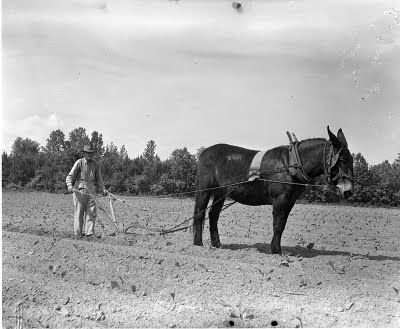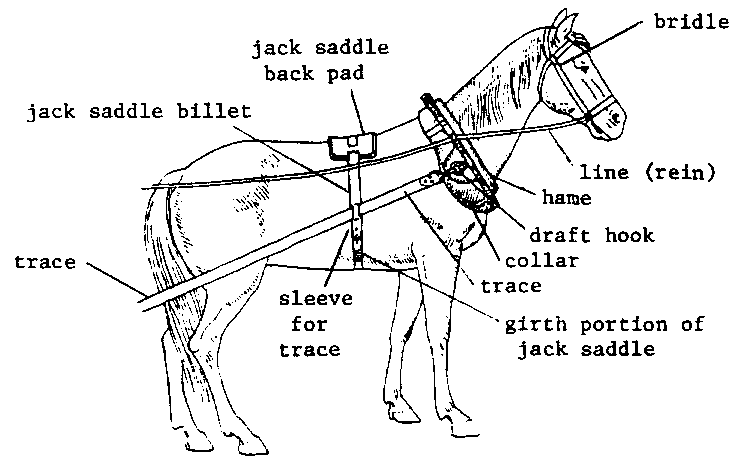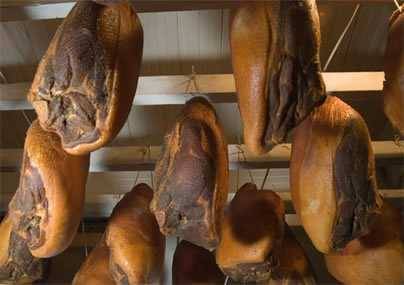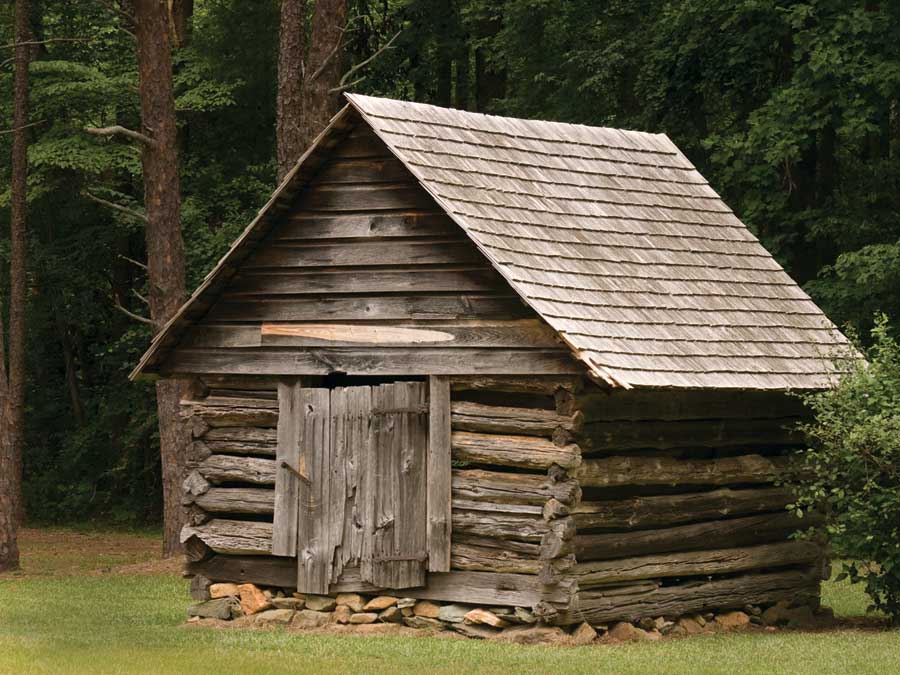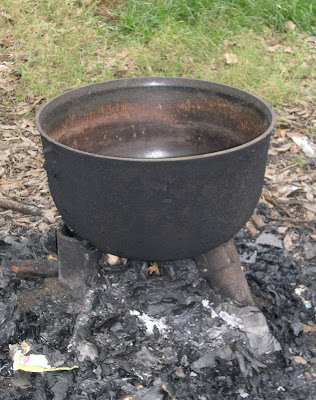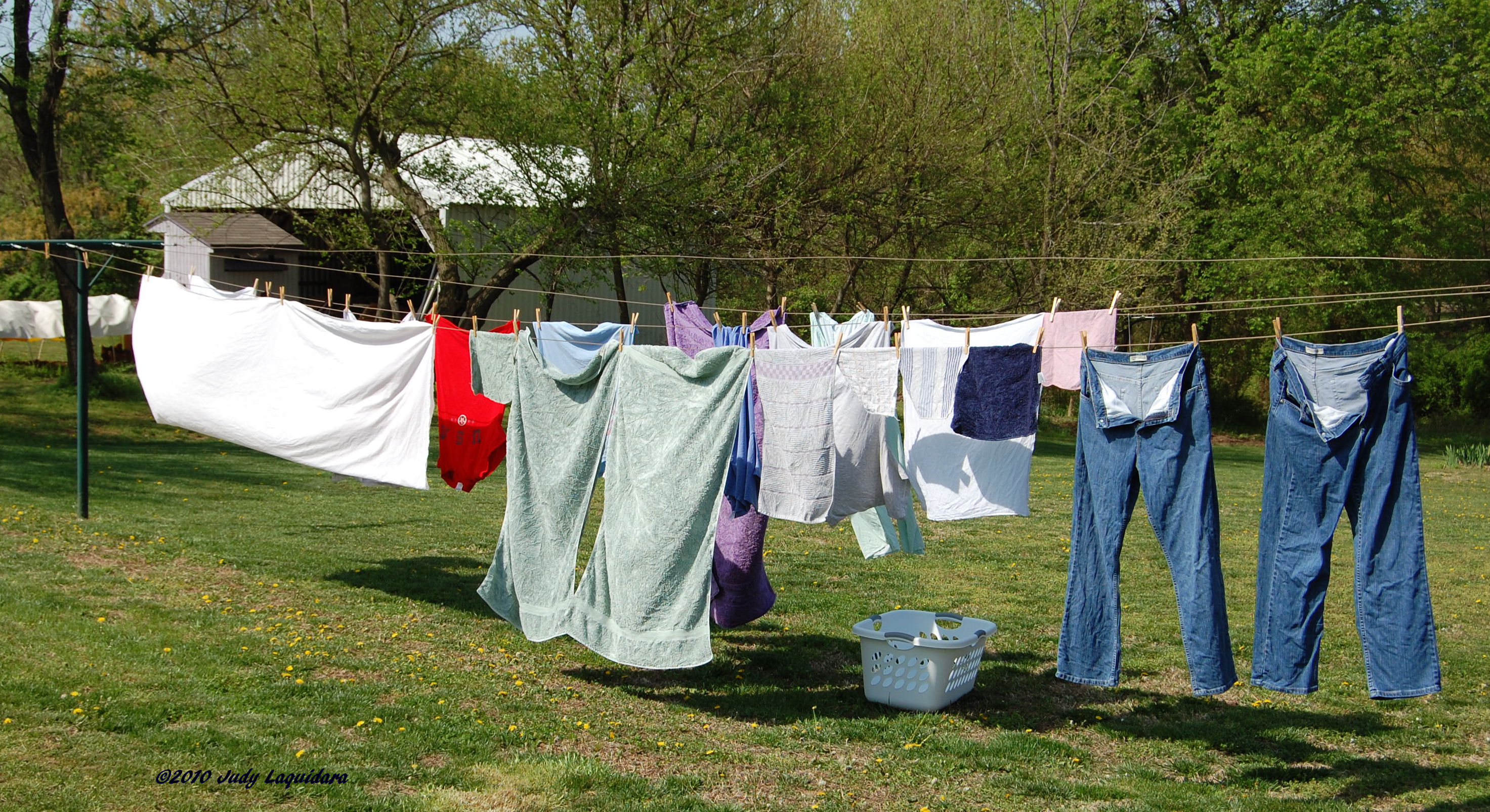For many years before tractors were available mules provided the power
for most farm operations in the fields. The most common were
implements pulled by one mule with the worker walking behind holding the
handles to guide the implement along the crop rows and controlling the
mule with ropes--the reins--attached to the bridle on the mule's head.
This was physically demanding labor and required significant skill and
experience.
The implements shown here were for plowing the
soil, spreading fertilizer, and planting seeds. |
 |
Cutting grain, especially
oats and wheat, was a manual process using the device shown here, a
cradle scythe. The scythe is the blade that cuts the grain as it is
swung by holding the handles. The cradle is the framework that
catches the grain as it is cut.
The grain can then be bundled.
|
 |
Here a barn replica
provides a display for the items used to "hitch up" a mule to the farm
implements, The large soft collar is placed around the neck
against the mule's shoulder and provides a padded contact for pulling.
The hame (somewhat like a yoke) is fastened around the collar and
connected to the traces (chains) that are then connected to the plow.
Here a local farmer demonstrates how this is done,
|
 |
Most farm families raised and butchered hogs to
provide meat throughout the year. Before food freezers were
available meat had to be cured or "preserved" so it could be stored at
normal temperatures, This was done by butchering in cold weather
and salt curing. The large trough shown here was used to pack meat
with salt for the curing process. Instead of salt curing, the meat was
often smoked to add flavor.
Farms often had a dedicated smokehouse for curing and storing the meat.
|
 |
Over the years barns have served many purposes
in our rural life, from housing farm animals to hosting community
social activities and barn dances.
An extensive exhibit showing the history and role of barns provides a
journey back in time and to this part of our heritage. |
 |
|
Before electricity came to the rural areas and farms, doing
the laundry was very different and required much more human labor,
usually by the women.
The process usually began and finished out in the yard with heating
water in a wash pot and then hanging the clothes to dry on the
clothes line.
Shown in this exhibit are the washtubs, a ringer to squeeze out the
water, and a washboard to scrub the clothes on to help remove dirt
and other stains.
The irons were heated on the stove or in front of an open fireplace.
A family would have several so they could be rotated between heating
and ironing the clothes.
|
 |
| The typical kitchen had a wood burning cook
stove as shown here. Sometime there was a small heater, shown here
in the corner, for heating water, especially for bathing, |
 |
| The library is an excellent resource for
reading about many topics relating to agriculture and rural life in the
past. A significant record of our rich heritage. |
 |
This website was developed and is managed by Perry Sprawls,
co-owner and operator of the Sprawls Heritage Farm located on
Sprawls Farm Road near Williston.
The farm has now been in the Sprawls Family for over 200 years
and is designated as one of South Carolina's Heritage Farms.
The house was built in 1856 and is one of the few to escape
burning during the Civil War because there was someone sick in
the house, and the Union soldiers said they did not burn
houses with sick people.
Contact: sprawls@emory.edu
|
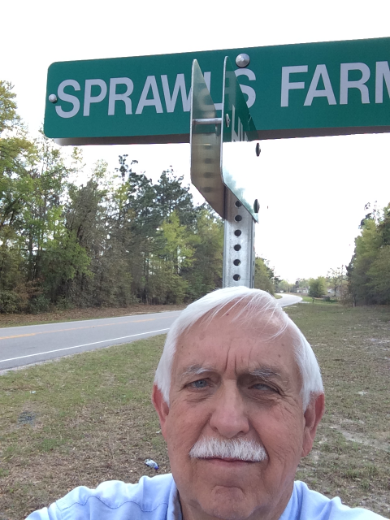 |
 |
|
|
|




